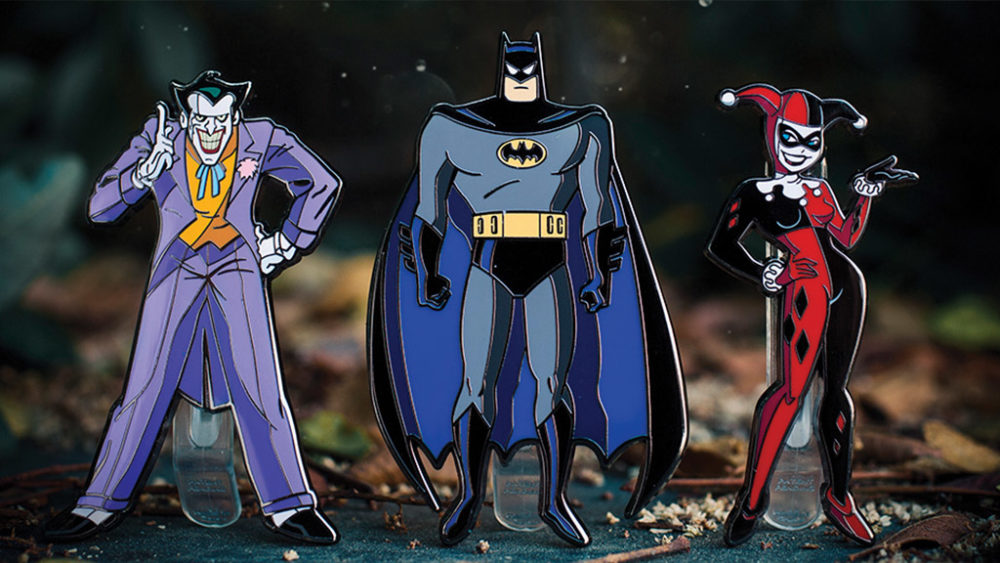
Back in 2013, Dan Williams was visiting Disneyland when he picked up a few blind-bagged pins. He took those pins back to his desk, opened them, and liked what he found — bright colors and sturdy material. However, he quickly realized that he had nowhere to display these pins.
He wasn’t going to wear them, so he stuck them into his desk drawer, thinking how cool it would be if he could display them like figures.
And that idea stuck in the back of Williams’ mind for about three years. In those years, he started a business with Travis Oliver, manufacturing custom goods for companies like ThinkGeek. Then, in 2016, the team started working on a pin-based project, which sparked a reinterest in that tiny start of an idea that Williams had with his Disney pins. He and Oliver, along with their colleagues Erik Haldi and Amado Batour, all came together and started developing the idea that March. Those four men would become the owners of FiGPiN.
“We were working on another project, but when we started doing FiGPiN, [Dan and I] just kind of looked at each other and said, ‘we just want to do this. Let’s just do this.’ So we just really did. We still did our other stuff, but when there was any open moment, this is what we pulled all of our energy and focus on,” Haldi says.
Now, five years later, FiGPiN is the only thing that the foursome works on. It has grown into a business, produced more than 700 different pins featuring more than 40 licenses — including Disney, Star Wars, My Hero Academia, DC Comics, Harry Potter, Marvel, Stranger Things, and more — and developed a dedicated fan base.
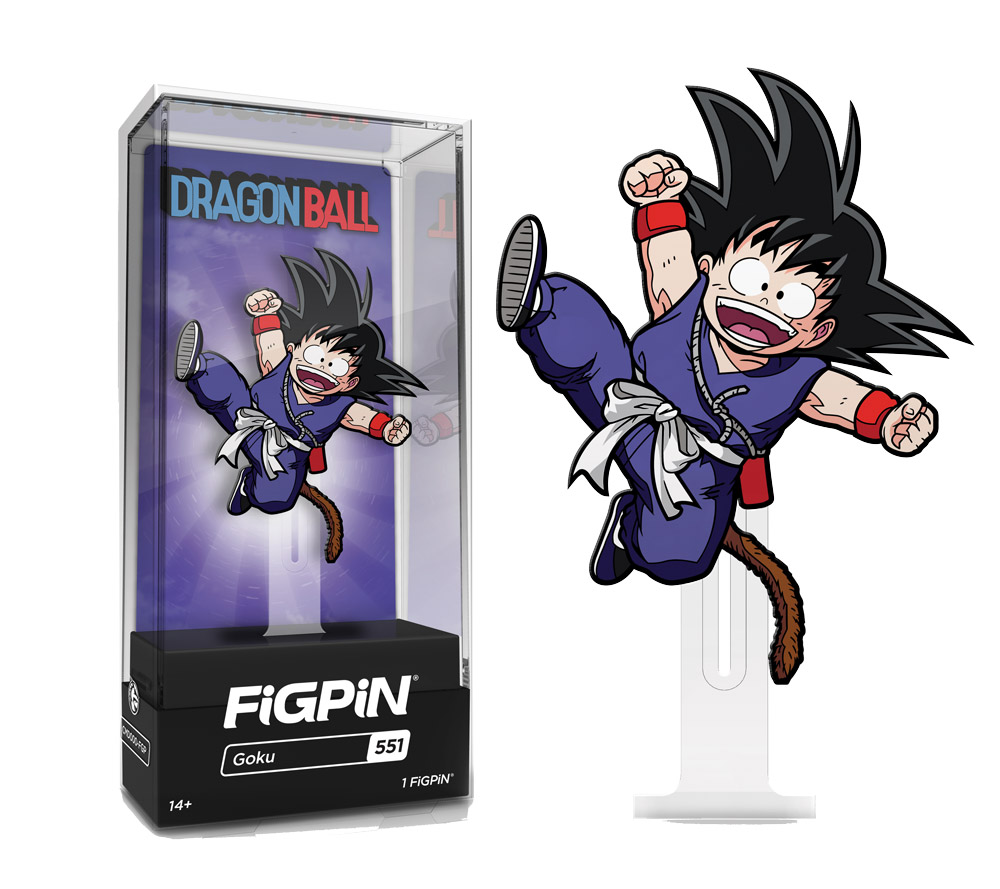
SO, WHAT IS IT?
The FiGPiN team was developing a product type that had been around for a long time: enamel pins. But what they chose to do with the hard enamel medium was entirely new. For those who have never seen one, a FiGPiN is not entirely a figure, nor is it entirely a pin. Each one stands about 3 inches tall and, while it does feature spikes on its back that could poke through fabric like any other pin, it also comes with a stand so you can display it like an action figure.
According to Batour, who now serves as the vice president of design and digital experience at FiGPiN, it is often hard to describe the product to people who have never seen one before.
“We kind of give our whole explanation, and they think, ‘oh, so you make pins, right?’” he explains. “And we’re like, ‘no, we make FiGPiNs.’ And they think we’re kind of full of ourselves when we say that. But then when they see the product, time and time again for more than three years straight, they’re like ‘oh, wow, this isn’t just an enamel pin. You guys did something else.’ And they have a hard time putting their finger on it. Like, ‘how did you make this thing more magical?’”
“Oh, wow, this isn’t just an enamel pin. You guys did something else.” – Amado Batour
The FiGPiN team does a few things to create this “magical” collectible experience, Batour says. One of those things is maintaining a realistic, art-first design approach. Instead of creating a distinct “FiGPiN” look and stylizing each character to match it, the designers — led by Haldi — literally draw every pin, adding details and pushing the limits of what enamel can do to make each 3-inch, metal character look as close as possible to how they appear on screen, on the page, or in person.
Michael Ruddy, a FiGPiN fan and the co-founder of Hero Complex, a company that makes the first officially licensed FiGPiN accessories, describes the deep sense of childhood nostalgia he gets from looking at the pins. He first started collecting Dragon Ball Z FiGPiNs when he came across the company on the showfloor at Comic-Con International: San Diego (SDCC). Talking about those pins, as well as the Teenage Mutant Ninja Turtle and Batman: The Animated Series designs, he describes feeling like he can see the characters in action.
“Right now I’m getting the chills just thinking about it,” he says. “Like, looking at the Batman pin, I was like, this is amazing. I can just close my eyes and this thing can animate in front of me. … It just made me feel a certain way, because it was like a snapshot from my childhood.”
However, the realistic design on the front of each FiGPiN is only part of the story. The rest of the FiGPiN experience starts with a series of tiny letters and numbers, etched into the back of each pin.
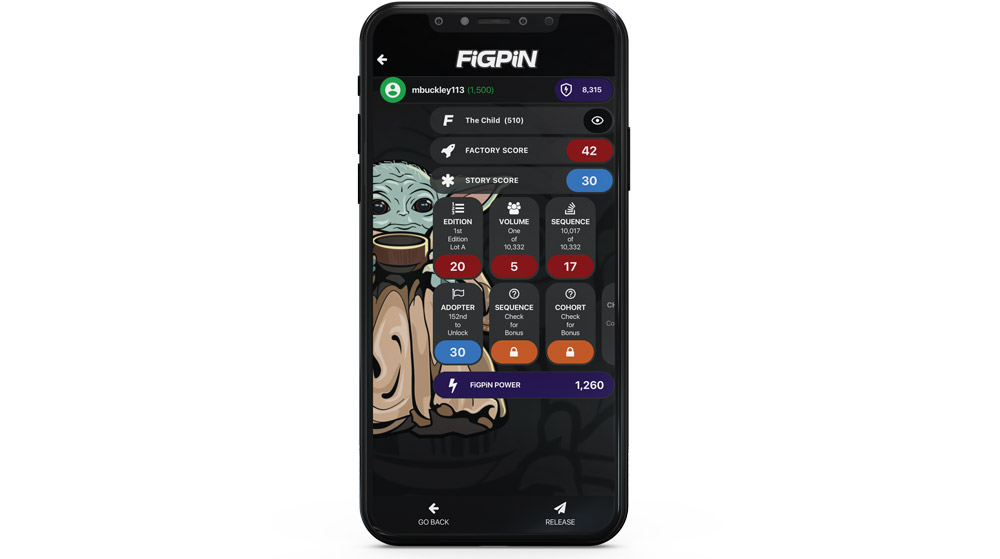
THERE’S AN APP FOR THAT
It was Batour who originally suggested that every single FiGPiN should have a unique serial number that could unlock a digital experience, even though he wasn’t entirely sure at the time what that digital experience would look like. But around the time when the team produced its 15th FiGPiN, the concept for a FiGPiN app started to take shape. And it would provide a full collector experience, utilizing those tiny, etched serial numbers.
“One of the things that kept popping up was, yeah, people like to buy collectibles and they like to put it on their shelf and kind of arrange it,” Batour says. “But I think, more than anything, they like to share their collections. They like to talk about their collections. They like to show off, display, get feedback on it, hunt for stuff, and — as with any physical collectible — you can’t bring that stuff with you.”
The FiGPiN app works to solve this problem: Collectors can enter the serial number from each pin they collect, which adds a digital version of that pin to their collection within the app. Collectors can also peruse the entire FiGPiN catalog, creating a wishlist and even shopping in-app for styles that are in stock.
But that isn’t even the most interesting aspect of the app. By entering the serial number, collectors receive two scores for every pin they unlock: a factory score and a story score. The factory score is determined by different manufacturing attributes of the pin, such as what edition it is, how many of that pin have been made (basically, if it’s rare), and what number it was in its manufacturing run. The app will tell you if your pin was the 100th or the 1,243rd pin of that design to come off of the assembly line, which is a level of detail that many collectors, like Ruddy, enjoy.
“You have that experience of, wow, there’s only 2,000 units, and this is, like, number 200 of 2,000,” he says. “ And I don’t know if this is the right word, but it kind of made me feel special. Like, oh, we got the same thing, but yours is number 2,000 and mine is number 100 … I guess the collector in me wants something more than you.”
“I don’t know if this is the right word, but it kind of made me feel special. Like, oh, we got the same thing, but yours is number 2,000 and mine is number 100 … I guess the collector in me wants something more than you.” – Michael Ruddy
The story score, on the other hand, comes from how collectors interact with the pin: Have you collected other characters from that collection? Did you register this pin before other collectors registered theirs? How long has it been in your collection?
Then, the app multiplies these two scores to give each FiGPiN a “power.” Users in the app can see all of this detailed information about every pin they own, along with an overall power score for their collection.
Having so many ways to distinguish a pin as valuable — along with the verification process that the app offers — created a strong resale market for FiGPiNs. Fan-made groups, such as “FiGPiN Buy/Sell/Trade” and “FiGPiN Chasers,” have grown on Facebook and remain consistently active, with collectors seeking out specific designs, offering up pins they no longer want, or simply showing off their collections.
Awstin Coslar, one of the founders and admins of the FiGPiN Buy/Sell/Trade Group, started his FiGPiN collection with Dragon Ball characters, just like Ruddy (though now, Coslar’s collection score has grown to more than 630,000). He says he was attracted to the collectibles because of the quality and the low edition size, and he started the group with a coworker in January 2019 to find FiGPiN styles they were both looking for.
“But it turned into a community,” he says. “And helped blow up the popularity of FiGPiN, once people saw the value the pins were demanding on the secondary market and the very low-run collectibility of the early run pins. It was super fun starting it and building it.”
FAN-FOCUSED
Interacting with fans is another core tenant of FiGPiN’s identity — for example, Batour maintains a Discord with a few dozen FiGPiN collectors, often seeking advice and feedback about the app and other aspects of the FiGPiN experience.
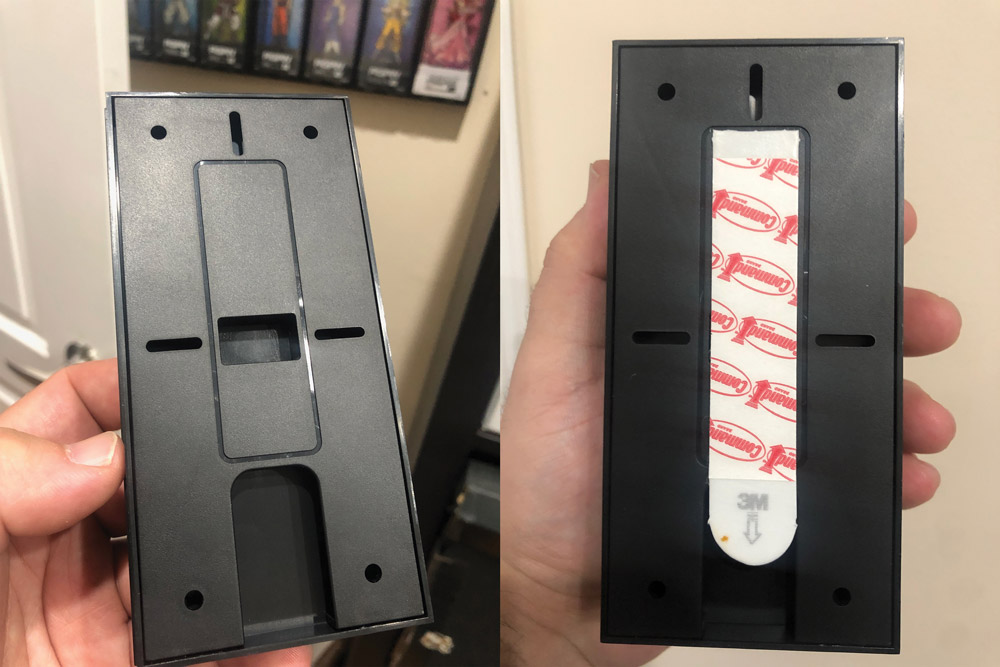
The founders also typically connect with fans and top collectors at conventions throughout the year — something they say they have missed the most throughout the COVID-19 pandemic. In fact, Ruddy first connected with the FiGPiN team at a convention. After buying those original Dragon Ball pins at SDCC, he wanted a way to display them, especially after his wife made a comment about them cluttering up their shared home office space. Ruddy, who works in 3D printing, designed and printed himself a wall unit that could hold eight FiGPiNs.
“I hung two of them on a wall and my wife walked by and she said, ‘oh that looks nice,’” Ruddy says. “And she never really likes anything that I make, so I was like, well, maybe I’m onto something here.”
He and his business partner ended up creating Hero Complex, a company to manufacture and sell these displays. However, manufacturing costs were high, and he ended up reaching out directly to FiGPiN via Instagram, then showing the owners some of his prototypes at New York Comic Con (NYCC). The day of their first meeting, Batour told Ruddy that he hoped they could help manufacture the product and make it the first officially licensed FiGPiN accessory — and that’s exactly what happened. Batour and Ruddy worked together to refine the display, eventually developing a modular system, in which each display box holds one FiGPiN. Using Command Strips, collectors can arrange and rearrange those boxes in any configuration on their wall.
“He’s just the nicest guy in the world,” Batour says of Ruddy. “To be able to meet a fan and then be able to work with them and help them develop a product that is going to benefit us and them, it just doesn’t get any better than that.”
Originally, the FiGPiN team was going to announce the partnership with Ruddy last year, during its Awesome Fest event at Emerald City Comic Con (ECCC). But then, the pandemic upended everything.
BRIGHT SIDE TO A TOUGH YEAR
Like many companies, FiGPiN employees have been working almost entirely from home for more than a year. The company was gearing up for its major ECCC event when things started to look bad in the U.S. last March. Batour recalls how the company’s convention plans started to fall apart, as he describes it, like dominoes — “the product is going to be late” became “the product is not coming,” and “the convention might not happen” became “nothing is happening at all.”
This left FiGPiN with a lot of stock that had been slated for the convention, and the team had to make a new plan, fast. Fortunately, the company was able to use the challenges of 2020 to pivot and refine its goals.
“I know it’s hard to try to spin positive things out of such a horrible thing,” Batour says, “But this has been something that has helped us out a little bit.”
One major shift involved reallocating that ECCC inventory and some of the planned retail stock, starting to sell it all on figpin.com. Previously, the website had only offered select exclusives, so this marked a significant change in company operations. However, it looks like one that is going to stick, with all non-retailer-exclusive pins now going on sale there, as well as in stores.
Within the past year, FiGPiN also altered its approach to new product launches, moving toward a wave-based release schedule. Basically, this means they release a handful of characters from each license at one time, as opposed to offering single characters at random times. Batour says that this is better for fans, as they can choose a few of their favorite characters for their collection.
Both Williams and Batour have spent time working in the FiGPiN distribution centers, packing orders for customers, and noticed patterns in which pins people tend to buy together. For example, Batour says many fans selected just Jubilee and Rogue from the X-Men: The Animated Series set, or just Wolverine and Gambit.
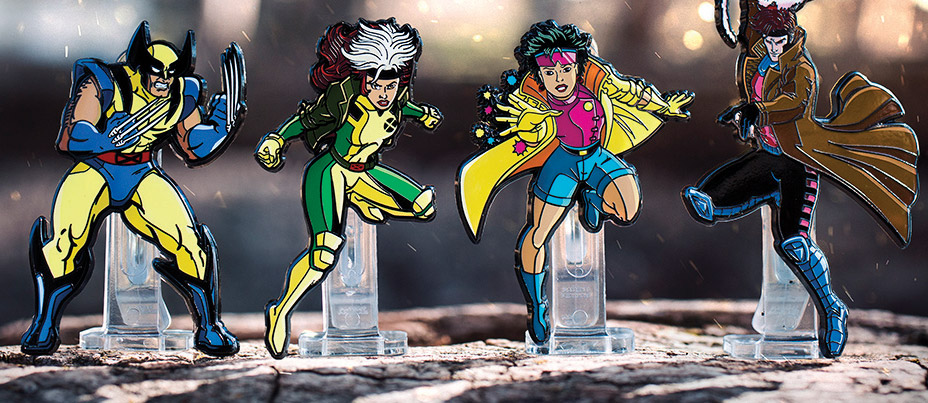
“I’m like, wow, you could write a thesis paper on this,” Batour says. “Like, how are these character groupings happening together? So if we had just done, like, one character or two, our fans would have never had the chance to build the collection that they want to build from the license.”
Both of these shifts from 2020 combine to create what the owners hope will be a more fan-friendly experience, allowing collectors to pick their favorite characters and — thanks to the increased inventory on figpin.com — know they can come back in a week or two and get the rest of that wave.
In this new year, there are a few additional plans in the works for FiGPiN, including new licenses and a strict new policy of only offering FiGPiNs online that are in stock and available to ship that same day.
And as for the quad of co-founders, their joy in working on FiGPiN has yet to fade, even after 700 unique launches.
“To this day, we still sit there like kids in a candy store going, ‘oh my god, these are so nice,’” Batour says. “We still have the same reaction when we get the first samples back from the factories. … And the fact that we keep doing this, we keep reacting in the same way, I find it to be a good indicator.”
This article was original published in Issue No. 9 of the Pop Insider. Click here to read the full issue!
